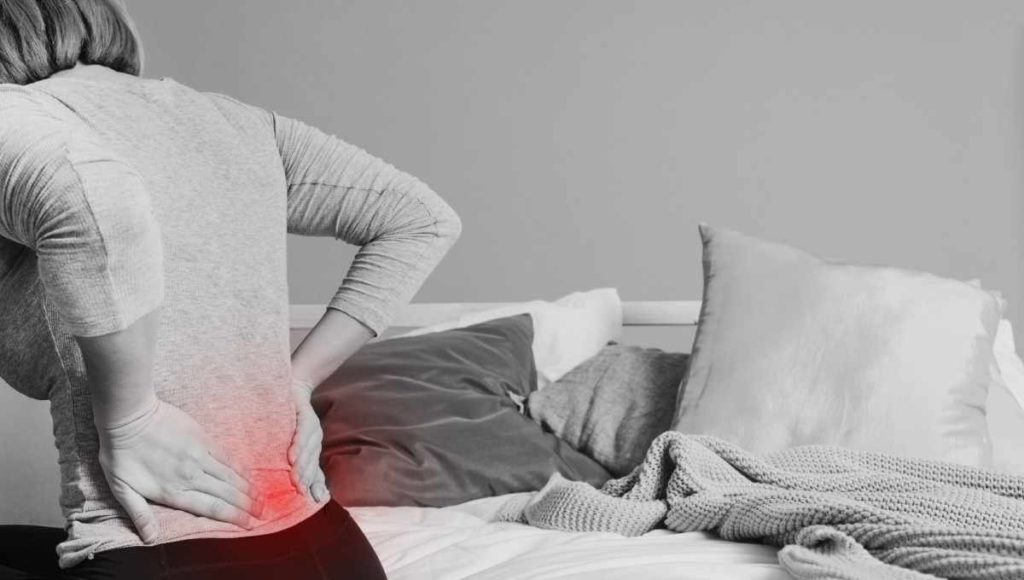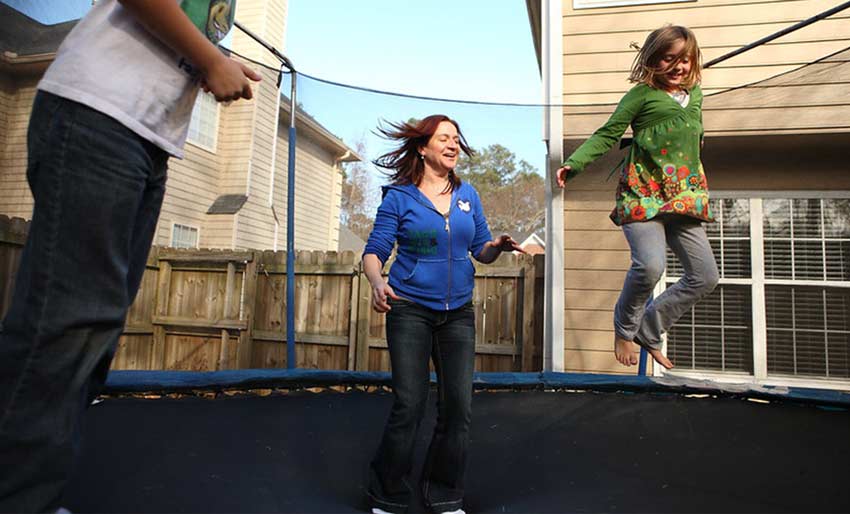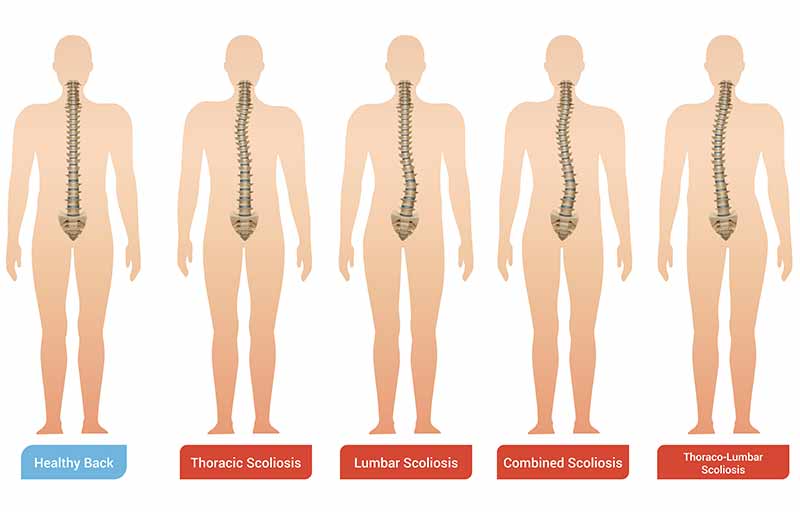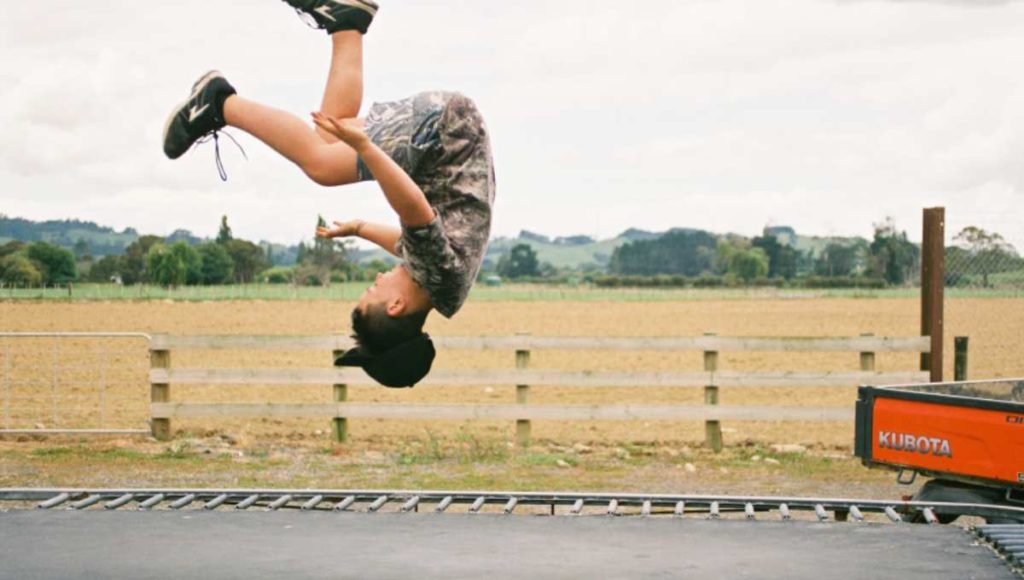Jumping on a trampoline is an all-around exercise for your body. It elevates your cardiovascular activities and stimulates the lymphatic system to fight off deadly diseases.
Your motor function increases along with coordination and balance from rebounding on a trampoline. Also, muscles get reformed, and bone density increases from regular trampolining. But not without some drawbacks.
Whether you are using a mini trampoline or a standard trampoline, the health benefits and risks are somewhat identical.
But what about the issue for this article? Is jumping on a trampoline bad for your back or not? The honest answer is yes, and no.
Rebounding on a trampoline can cause repeated stress on your intervertebral discs located in between the vertebra of your spine. If you jump on the trampoline over the optimal time (15-20 minutes/day) could also lead to inflammation of the soft tissues and paraspinal muscle strain.
People with certain health conditions like osteoporosis, degenerative disc diseases, pinched sciatic nerves should never step on a trampoline.

Is jumping on a trampoline bad for your back
Rebounding on a trampoline is a mixed bag for your back. So we’re going to cover the bad and the good here. First, let’s discuss some bad effects of the trampoline for your back.
Rebounding on a trampoline could be bad for your vertebrae.
The bottom line is, if you don’t have any existing back problems that prohibit certain movements and positions, you are unlikely to get injured. But few incidents make us wonder though. A UK nurse has blown up her vertebrae while jumping on a trampoline.
Rebounding could be bad if you have nerve damages.
If you are suffering from a pinched nerve, then jumping on a trampoline might not be the best idea. You’ll need at least a few days of rest to recover from a pinched nerve. But in more severe cases, surgery is often required.
Another severe injury is known as sciatic nerve damage. Surprisingly if you have sciatic nerve damage, then you should move around rather than take complete rest. Walking is the best sciatic pain reliever. Just don’t make awkward movements like twisting, grinding, or in this case, jumping on a trampoline.

Can I rebound on a trampoline with osteoporosis?
This is another disease that limits you with specific movements. So jumping on a trampoline with a condition like osteoporosis is out of the question. You may enjoy a brisk walk. That’s all.
Jogging is a high impact activity. But it’s not a sudden force that compresses our spinal disc and joints. But with rebounding, you put more pressure on these joints and ligaments, which may lead to strain or other injuries.
Do you know why physicians recommend rebounding exercise on a trampoline for 15-20 minutes each day?
Because rebounding may not be taxing on your energy level, but it stretches the tissues in your spine. Even those discs within each vertebra are under constant pressure from repeated rebounding impacts.
The bottom line is, if you try to push the limit on a trampoline, your soft tissues in the spine could get inflamed and cause nerve damages and unexplained pain.
Why shouldn’t you rebound with Scoliosis?

People suffering from scoliosis should avoid strenuous activities like gymnastics, ballet, sprinting, rebounding on a trampoline and even random stretching.
Scoliosis is a disease that affects our spine. Causes it to bend and that accompanies with severe pain. You shouldn’t even rebound in your dreams with this complex health condition.
But that doesn’t mean you live a sedentary life. Orthopedics around the world recommends a few selective activities like walking, certain kinds of stretching, pelvic floor loft, and many more.
So the bottom line is, no matter what age you are or how severe is your spinal deformation, you shouldn’t be jumping on a trampoline, period.
Can I rebound with degenerative disc disease?
It’s best to avoid rebounding with degenerative disc disease. Your intervertebral discs are designed to absorb shocks. As they begin to degrade, specific exercises like jumping on a trampoline put a jolting impact on the back.
Check out this stunning guide with 11 Best Exercises to do on a Mini Trampoline to keep your body fit.
So you can’t rebound on a trampoline, especially when you’re healing from this painful degenerative disease.
To manage the pain, there are specific exercises that are excellent for degenerative disc disease.
Is it safe to rebound with back muscle imbalances?
Muscle imbalances can occur at any part of your body. The leading causes are bad posture and repeated movements of particular body parts, or it could result from a predisposition.
If you have this muscle inconsistency in your back, then perhaps it’s best not to rebound on a trampoline because a group of muscle joints on your back could get pressured from the unpredictable rebound impact.
The bottom line is, those who suffer from muscle imbalances and musculoskeletal tension are more likely to get injured from jumping on a trampoline. Because those sudden impacts and momentum of the gravitational pool aren’t ideal on those damaged tissues.
Ways to strengthen your back muscle to reduce the risk of injuries
Injured or not, you should start a few exercises to strengthen your back right away. Because resting too much can make your back pain worse. Don’t let your back muscle get deconditioned and weak. Start these following activities.
Swimming

Swimming is excellent exercise. It’s a perfect low impact resistance exercise for athletes, patients, and healthy individuals. When you’re swimming, the water buoyancy supports your body weight and eliminates pressure on your joints in the process.
But not all swimming styles directly benefit your back. To improve back muscle strength and decrease pain, the back-stroke is the best swimming style. Surprisingly, this style puts less pressure on your back muscle and prevents back-arching.
Biking

Cardio exercise helps people with a bad back. Biking or cycling at the gym is one of the best cardiovascular exercises.
Caution! People with degenerative disc diseases should avoid biking outside. They should use the cycling equipment indoors or at the gym to prevent shock on their intervertebral discs.
According to research, you can improve your back muscle strength and prevent pain by maintaining a static posture on the tricycle.
Yoga

Yoga is an excellent activity to reduce stress, insomnia, anxiety, and depression. It also strengthens our back muscle to decrease pressure on the spine.
You have to strengthen your back muscle to prevent future injuries. I follow these yoga poses for robust and flexible backbones. A strong back relieves pain and prevents serious chronic spine diseases fro occurring.
Walking

Sometimes we tend to forget that a simple walk in the afternoon can improve your health significantly. You don’t need to spend hours and hundreds of dollars to achieve a healthy state of your body.
But does it strengthen our back? You’ll be surprised that walking focuses on a particular group of muscles in our body. Among them, these two paraspinal muscles that support our back gets stimulated directly when we walk.
Standard Planks

Building core strength is an excellent way to keep your back healthy. When you do the standard plank, there will be pressure directly on your core. Try to keep your back in a horizontal position.
Planks affect directly on your abdomen wall and paraspinal muscles. If you love rebounding on a trampoline, please do a few planks every day. It will strengthen your back and put less tension on the intervertebral disc.
Pelvic floor lift
Also known as kegel exercise mainly focuses on building pelvic floor muscle strength. But why are we focusing on our pelvic muscles instead of our back?
There are different types of pelvic floor exercises. The one we will be doing for a stronger back is called pelvic curl or pelvic tilt. You’ll have to lift your core and your thigh as high as possible while keeping your upper shoulder with the ground for balance.
Think of it you’re making a ramp for bike jumping with your body. Three areas will be benefitted by this posture: your paraspinal muscles, core muscles and pelvic floor muscle.
Attention Dudes: I used to suffer from erectile dysfunction. These following pelvic floor exercises cured my symptoms. And now I can last twice as much in bed.
Tips to reduce the chance of trampoline-related injuries
- Try to rebound on a trampoline one person at a time. It’ll be easier for you to anticipate your landing.
- Install a safety net enclosure around the trampoline because an awkward fall could lead to broken legs, hands, shoulder dislocation, fractures, nerve damages, head, and other serious injuries.
- Try to land on the trampoline with your knees slightly bent. A straight Landon might lead to a sprained knee joint because of improper landing impact.
- Avoid backflipping and somersaults on the trampoline. Remember that landing awkwardly on your neck can cause a herniated disc.
- Try to do some exercise that benefits your back. Do some warm-ups and stretching before jumping on the trampoline.
Takeaway
Rebounding on a trampoline is an excellent low-impact aerobic exercise. The benefits of jumping on a trampoline are way more than a few potential risks.
We tried to clarify and verdict based on facts. So, “is jumping on a trampoline bad for your back?” It depends on how long you are jumping and the overall condition of your paraspinal muscles.
You can check out this guide: How long should you jump on a trampoline?
The bottom line is, don’t try to push your limit on the trampoline. Take it easy and bounce to shed a few ounces. Cheers.





